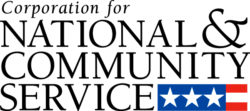
Like so many communities across the USA, the town where I live has many, many homeless people: people, including children, who are couch surfing, living in cars, sleeping in public spaces or sleeping in shelters, because they have no space of their own. There is a patchwork of organizations trying to help them with basic, immediate needs, and I attended a presentation by one of the organizations trying to offer temporary shelter – and by temporary, I mean both temporary for people that will stay there and temporary in their own existence. One of the slides in her presentation had a list of all of the many things different agencies were doing to assist the homeless. But there was also this warning on the slide: None of which will go to preventing or ending homelessness. And that included the temporary shelter her organization was providing, and all of the volunteers helping in such.
In Houston, we’ve seen all sorts of people volunteering to help people get to temporary shelters, to feed people in those shelters, to evacuate people from their flood ravaged homes and cars, to get animals to safety, and on and on. And that’s not just nice, that’s necessary, and I’m so grateful that I live in a country where people are so willing to donate their time. But volunteers could not do this alone, and eventually, disaster-response volunteers are going to go home, and there are going to be thousands of homeless people and animals who are going to need ongoing, continuing assistance, even as volunteers leave the area.
I love volunteerism, and I don’t trust nonprofits that don’t involve such. I think volunteers are critical for nonprofits, schools and government agencies – and not for saving money. I am passionate about the critical role volunteers can play in a range of issues and services. Again, they aren’t just nice – they are necessary.
However, I also believe we need more than only – solely – volunteers to keep schools open and of high quality, to keep water clean, to keep hike and bike trails safe, to help the homeless, to address drug abuse, to give children the safety nets they need to navigate their life into adulthood, to promote the arts, to address youth violence, to respond to disasters, and on and on. Full-time, fully funded experts are needed. Initiatives solely, completely dedicated to certain issues are needed – and these initiatives must have funding. I have been begging nonprofits and schools, for years, to tell government officials and corporate philanthropy folks explicitly that, while volunteers are great, money is ALSO needed, to meet the needs of the community. We cannot do all that needs to be done in our spare time, donating just a few hours a month. The last time I was fully on this soapbox on my blog was in 2011, regarding the UK’s “Big Society” movement.
I have often gotten a very cold reception because I don’t embrace the idea that serious community and environmental issues can be fully addressed by people giving a few hours whenever they might have some time to spare, as volunteers. I’ve even been accused of being anti-volunteer, which, given the amount of time and effort I give to promoting volunteer engagement and best practices for such, is ridiculous.
In July 2000, The New York Times published “The Vanity of Volunteerism,” by Sara Mosle. She taught public school for three years, and after she left that profession, mentored four of her former students for a few years. She writes about her experience in her Times’ piece and weaves into her account statistics and feedback about the growing expectation of the US government for volunteers to fill in the gaps in service left by the federal government withdrawing support for nonprofits, state governments and government social services. She quotes people and sources that note that the need for social services was increasing at the time, but donations and government financing didn’t increase, and volunteering wasn’t enough to fill the gaps. She also talks about the negative consequences for clients of nonprofits, schools and social service agencies of more and more people engaging in episodic volunteering – what we now call offline microvolunteering – instead of long-term, high-responsibility traditional volunteering.
The piece also references the Presidents’ Summit on America’s Future in Philadelphia, a three-day event that was aimed at boosting volunteerism and community service efforts across the USA. President Bill Clinton, Vice President Al Gore, former Presidents George Bush, Gerald Ford and Jimmy Carter and retired Gen. Colin Powell all participated. I blogged about the 20th anniversary of that summit earlier this year.
Below is an excerpt from the 2000 New York Times article. Sara Mosle was singing the same song as me back in 2000, and I think her article’s statements, and the circumstances of nonprofits, need to be revisited. Note: the piece refers to Impact Online, and that is the original name of what is now VolunteerMatch. Also, the bolded text is my emphasis, not the article’s:
Excerpt:
For more than a decade, politicians and civic leaders have been looking to volunteers like me to take over the government’s role in providing vital services to the poor. Although the movement arguably began in 1988 with the candidate George Bush’s invocation of ”a thousand points of light” as a response to Reagan-era cutbacks in social spending, it has been embraced by the current Democratic administration, which has continued those cutbacks, and culminated in the 1997 President’s Summit for America’s Future in Philadelphia, where President Clinton and Gen. Colin Powell touted the power of volunteerism. Now George W. Bush has picked up his father’s theme of ”a kinder, gentler” America by pushing ”charitable choice” — the provision in the 1996 welfare reform bill that allows faith-based organizations to contract with government to provide social services to the poor. (Al Gore supports it, too, though less vigorously.)
”Compassionate conservatives” would probably claim that I am the kind of ”caring adult” who can transform the lives of disadvantaged kids more effectively than any government program. I’m all for volunteering, but I would disagree. While I don’t doubt that I have had some positive effects on my kids’ lives — studies show that mentoring can reduce dropout rates and drug use among teenagers — they have mostly been of the ”boosting self-esteem” variety that conservatives, in other contexts, usually disdain. Besides, I’m not a very good volunteer. To work, mentoring has to be performed consistently, over a sustained period of time and preferably one on one. For the first couple of years, I saw my kids as often as twice a week. But now I’m lucky if I see them once a month, and I almost never see them individually. In their lives, I’m less a caring adult than a random one. And my failure is representative.
Although 55 percent of Americans reported that they volunteered at some point in 1998 — a 7 percent rise over 1995 — this jump does little more than recover ground that was lost in the early 1990’s and represents just a 1 percent increase over 1989. Moreover, the total number of hours that people are giving has actually declined. ”It’s a new trend,” says Sara Melendez, the president of Independent Sector, which compiled this data. ”People are volunteering, but when they do, it’s more of a one-shot deal — half a day one Saturday, instead of once a week for x number of weeks.” Overall, Americans donated 400 million fewer hours in 1998 than they did in 1995.
Consequently, while Powell has made recruiting 100,000 new mentors a top priority of America’s Promise, his volunteer outfit, there is little evidence that people are sufficiently answering his call. In New York, for instance, Big Brothers/Big Sisters receives just 4,000 inquiries each year from potential mentors. Of these, two-thirds never follow up once they learn they have to commit to seeing their kids at least twice a month. Another 700 lose interest after the initial training session or are eliminated through the program’s rigorous screening process. Only 600 people ever become mentors — this in a city with more than one million schoolchildren — and nationally, the program has a waiting list of some 50,000 kids.
To help nonprofits cope with this new unreliable work force, groups like Impact Online and New York Cares have sprung up that act like temp agencies, matching the interests (and busy schedules) of what might be called the impulse volunteer — someone with an urge to give but only a few hours to kill — with openings, arranged by time slot and geographical location. But this Filofax approach to giving often robs volunteerism of the very thing that was supposed to recommend it over government in the first place — namely, the personal connection that develops when you regularly visit, say, the same homebound AIDS patient.
And in a volunteer’s market, not every need has a buyer. ”People will come in and do a project — a school painting, a school wiring — and think they’ve done a good service and go away,” says Paul Clolery, editor of The NonProfit Times. ”But it’s not the type of traditional, week-in and week-out volunteering that a lot of organizations really need.”…
The experience of Meals on Wheels in Dallas is typical. It can’t find enough volunteers to commit to even a few hours a month to help deliver meals to the city’s elderly shut-ins. ”People can’t get away during the middle of the day,” says Helen Bruant, the program’s director. ”So, they ask, ‘Why don’t you deliver in the evenings?’ Well, we looked at that. But for a lot of our clients, this is their only meal. They eat half at lunch and save the other half for dinner. Plus, it’s not good for the elderly to eat a big meal at the end of the day.” Therefore, the program must hire 30 percent of its drivers. Even paying people, Bruant cannot find enough help. ”We can’t compete with McDonald’s,” she says…” Yet, if anything, the need is increasing. ”The aged population has grown by leaps and bounds in the last decade,” Bruant says, ”but giving and government financing haven’t increased.”
As a result, the heads of some of the most reputable nonprofits — the United Way, the Salvation Army, Catholic Charities — have reported that they can’t keep up with rising demand for their services. ”We’re having to turn people away, or ration portions, to stretch supplies,” says Deborah Leff, the president of America’s Second Harvest, the nation’s largest network of soup kitchens. And while charitable giving is up sharply, the growth has not kept pace with reductions in government aid to the poor. ”People have replaced some of it with volunteering, some of it with cash, but not all of it,” says Richard Steinberg, a professor of economics at the joint campus of Indiana and Purdue Universities in Indianapolis…
end of excerpt
September 14, 2017 update: wow, someone must have been inspired by my blog:
Bill Gates: Don’t expect charities to pick up the bill for Trump’s sweeping aid cuts.
Also see:





 I’ve updated
I’ve updated 



